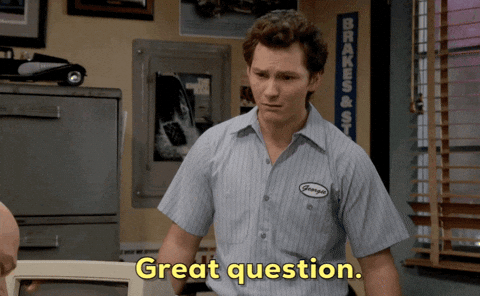Marketing, Misunderstood
What Peter Drucker still gets right about marketing, and why it matters now more than ever.
Previously on Giuseppe’s Glimpse: In the last episode, we explored how true competitive advantage isn’t in what you have, but in how you combine it. We discussed why imitation flattens your edge, how advantage is built through integration, and how the same logic applies to personal growth, too. Missed it? Catch up here! ✨
Buongiorno everyone 👋
While preparing my talk for the next Peter Drucker Forum, I picked up some of his old writings. I’ve read a lot of them before, but one line hit me again, as if for the first time:
“Marketing is not a function. It is your business seen from the customer’s point of view.”
It sounds simple, but it’s not how most companies work. ⚒️
We still treat marketing as a department. Or as a campaign. Or as something that happens downstream — once the important decisions are made.
But Drucker flips the lens. He says: start with the customer. Look at your company through their eyes. Then act accordingly. 👀
It’s a useful reminder. Especially now, when AI tools are everywhere, dashboards flood us with data, and it’s easy to feel like “more” is the answer — more visibility, more reach, more noise.
But maybe the problem isn’t volume. Maybe it’s perspective.
Start with what people want (and need).
Marketing isn’t about getting people to want what you make. It’s about making something people already want — hopefully before they realize it and your competitors notice it. 🎯
That may be the most common misunderstanding I see.
We still act as if the job of marketing is to sell what’s on the shelf. We hire agencies, run ads, build funnels. We ask: how do we make this more attractive?
But if no one wants it — or if we’re not sure who it’s for — those efforts just buy time. ⏳ They don’t solve the real problem.
Drucker’s quote forces us to ask harder questions:
Do we really know who this is for?
Do they care about this the way we think they do? 🫂
Have we made it easy to understand, choose, and use?
If we can’t answer those questions, marketing needs to shift gears. It needs to go upstream. It needs to help shape the product — or the offer — so that it starts from customer logic, not company logic.
And that’s not branding. It’s business design. 🖌️
Why marketing can’t fix misalignment.
Most of what matters is invisible. And most companies don’t look for it.
The parts of your business that customers experience most directly — your product, your price, your site, your emails, your support — often don’t talk to each other. 💬
They live in separate silos. They’re managed by different teams. So what the company sees is not what the customer sees.
And that’s a problem. Because customers don’t experience your business in parts. They experience it as a whole. 🌐
They don’t care which team made the interface. They care if it makes sense.
They don’t care how hard your backend is. They care that the payment went through.
They don’t care about your tone-of-voice document. They care if you write like a human being. ✍️
In other words: the experience is the brand. The alignment is the message.
And if the inside view doesn’t match the outside view, you have a marketing problem — even if your ads are great.
Empathy as an operating principle.
Good companies build empathy into how things work. 💌
You see it in the details:
When a form is easy to fill out.
When support doesn’t just answer your question, but solves the problem behind it. 🛠️
When a brand explains the hard parts instead of pretending they’re simple.
These moments don’t come from a tone of voice. They come from a way of working.
Teams that pause to ask: “How will this feel on the other side?”. Processes that leave room for human judgment. Leaders who care as much about clarity as they do about speed. ✨
You don’t need fancy words for this. You just need people who are willing to ask, again and again: “Is this actually working for the person we’re trying to help?”
This kind of thinking isn’t limited to the marketing team.
It shows up in product, operations, customer support — anywhere someone cares enough to make things work better for the people using them. 🤝
That’s marketing, too. Whether it has the label or not.
One last question.
Before you write your next campaign, update your website, or launch your next product, ask yourself this:
If someone had only their experience with us to go by — and nothing else — what would they believe about who we are? 🤔
Would they say: “These people get me”?
Would they say: “This works”?
Would they even come back? 🔁
If the answer isn’t clear, don’t reach for a better tagline. Reach for a clearer point of view.
Because as Drucker said, marketing isn’t what you say. It’s how your business shows up through the eyes of the people who use it.
Stay curious! 🙌
-gs
Oh, wow! You made it to the end. Click here to 👉 SHARE this issue with a friend if you found it valuable.







